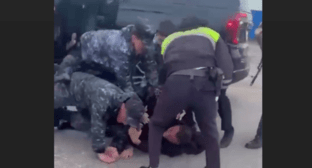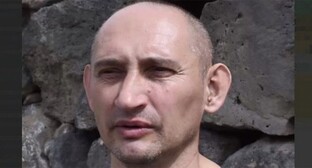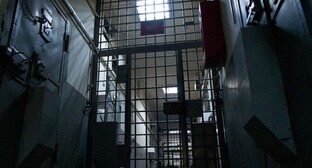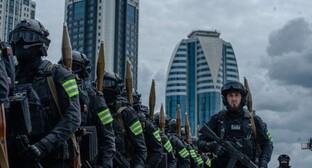21 January 2004, 01:10
The Vainakhs On the Verge of the Third Millenium.The Ossetian-Ingush Conflict
The Ingush people could not accept the fact of losing the part of their land which has been under the jurisdiction of North Ossetia since 1957. Before the deportation there lived the most part of the Ingush people. Many important historical facts of the Ingush people are related with this territory. Besides that during the 1924-1934(1) period the administration center of the Ingush Autonomy was located on this territory.
After returning back from the places of deportation many Ingushes settled in the Suburban Region and in the city of Orjonikidze. According to the 1970 census in the North Ossetian ASSR lived 18 387 Ingushes that made 11,7% of all Ingushes living in the USSR. At that time starts the Ingush movement for restoration of the Ingush Autonomy within the former borders. At the beginning there were collective letters to the Central Committee of the CPSU and in January 1973 took place a three day political mass meeting. The people put in the claims for restoration of the autonomy and the Suburban Region.
To counterbalance the demands of the Ingush people the Ossets also started the national movement and in October 1981 mass political demonstrations took place in Ordzhonikidze.
Though in the so-called "stagnation period" changing of the existing borders was possible. In order to limit the yearning of Ingush people for the Suburban Region the Council of Ministers of the USSR adopted the Resolution No 183, dated March 6, 1982, concerning the special regime of registration permit and selling and purchasing of houses and plots in the mentioned region.
By starting the "perestroika" (reorganization) in the USSR the Ingush people hoped to settle the territory problem successfully. In 1988 a political-public organization "Niiskho" (Justice) was founded. Its aim was restoration of the Ingush Autonomy within the historical borders. In case of settling this question positively the future revival of the Ingush people and restoration of its Government (Autonomous Republic within the limits of the RSFSR) seemed to be possible.
The Law "On rehabilitation of the repressed people" soon strengthened the position of the Ingush people. According to the Law adopted by the Supreme Soviet of the USSR on April 26, 1991, all repressive acts are considered illegal and criminal and complete rehabilitation of the repressive people, including their territorial rehabilitation, is foreseen. In Article 3 of the mentioned Law is said that "Rehabilitation of the repressed people means acknowledgment and realization of their rights on restoration of their territorial unity that had existed before the anti-constitutional policy of forcible remaking of the borders".
The Supreme Soviet of the North Ossetian ASSR in 1990 accepted a declaration on governmental sovereignty concerning the disputable lands. It said that the territory of North Ossetia could not be changed without expressing the will of all-capable population of the Republic by referendum. Upon issuing the Law of the RSFSR "On rehabilitation of the repressed people", the Supreme Council of the North Ossetian ASSR addressed the leaders of the Soviet Union several times and requested to suspend the action of the mentioned Law with respect to the territorial rehabilitation of North Ossetia(2).
Together with the attempts of securing the disputable lands legally both sides started training of military formations, laying in the reserves of arms being abundant in the "hot points" of the country at that period.
The processes taking place in the Chechen Region played the role of catalyst in the Ossetian-Ingush conflict. It is natural that striving of the Chechen people for independence and the decision of the Ingush people to stay with Russia caused splitting of the Chechen-Ingush region, though among the Vainakhs still were many supporters of its unity. On September 15, 1991, on the day of self-dissolution of the last Supreme Soviet of the Chechen-Ingush Republic a special meeting of public delegates of the Ingush region was held in the town of Nazran. At the meeting the Ingush Republic with its historical territory and administration center in Vladikavkaz was declared. On June 4, 1992 The Supreme Soviet of the Russian Federation adopted the Law "On Forming the Ingush Republic Within the Limits of the Russian Federation", though it did not determine the borders of the new republic. As for the Russian Government, it was not in a hurry to realize the law about the repressed people. Unlike the Ingush people, belonging to the "rebelling" ethnos of Vainakhs, Moscow took the side of the Ossets who were considered the most loyal to Russia among the peoples of the North Caucasus. It is quite obvious that shuffling the Ossetian-Ingush "cards"certain forces in the center were planning to change the situation in the Chechen Republic.
In the early 90s more than 33 thousand Ingushes lived in North Ossetia, predominantly in Vladikavkaz and on the territory of the Suburban Region. But the real number of the Ingushes in the Republic was much higher, as most of the Ingushes were not registered in the Republic. Strains of passion caused by the territorial problem resulted in the separate collisions between the Osset and Ingush inhabitants of the Suburban Region. The situation aggravated because of the refugees moving from South Ossetia and other parts of Georgia to North Ossetia during the Georgian-Ossetian conflict in 1990. The republican leaders settled most of them, being on favourable terms, in the Suburban Region. At the same time the Ingush people, trying to settle on the disputable territories, were rather discriminated: they were refused to be registered there and get the plots, they also had problems with the police, etc.
On June 12, 1992 North Ossetia offered the Supreme Soviet of the Russian Federation to establish the state of emergency in the Ossetian regions bordering with the Ingush and the Chechen regions. In order to realize this resolution the armed formations including about 12,5 thousand armed people and heavy military equipment were transferred into the Republic. At the same time, in order to prevent the "Ingush expansion", the anti-constitutional armed structures, the National Guard and people's volunteer corps started forming in North Ossetia with the assistance of Moscow. The Russian leadership transferred at their disposal a large amount of arms, military equipment, including 11 anti-aircraft aims, 57 tanks, 53 armoured transports and 4 armoured cars. Besides that various requisites (sub-machine guns, grenade cup discharges, explosion instruments, night vision instruments, etc.) were produced at the munitions factories of Vladikavkaz. It is noted in the book "Russia (USSR) in Local Wars and Military Conflicts in the Second Half of 20th Century", edited by the Institute of Military History of the Russian Ministry of Defense, that "The position of the Russian leadership has been formed under the influence of the events taking place in the Chechen Region and is formulated as follows: providing of people's security is not the main principle, the main principle is providing of integrity and security of Russia". Thus, an official sanction was practically given to Vladikavkaz to organize a large-scale ethnical cleaning in the Republic.
On October 31, 1992 a mass armed action with the supporting of the Russian army started against the Ingush villages defended by the native inhabitants. As a result of the murders, capturing the hostages, setting fires and robberies, raging in the region for several days, the Ingushes were driven out of the Suburban Region and Vladikavkaz. Several tens of thousands of people were deported (according to some data 60,000 Ingushes were driven away). According to official data 583 people were killed, with 407 Ingushes, 105 Ossets and 17 military men among them. More than 200 men were captured as hostages or were missing. According to eyewitnesses, the hired soldiers from South Ossetia, who had the experience of war under the circumstances of ethnic confrontation, were distinguished by their cruelty(3), when driving the Ingush people out of their lands.
On November 2, 1992 in the territories of Ingushetia and North Ossetia Moscow established the regime of state of emergency. Additional federal forces were transferred to the region but killing and terror of the Ingush people were going on. It was only after November 4, when the intensive armed clashes ended.
The bulk of the refugees gathered in the Ingush region. Part of them found shelter in their relatives' houses, the others were placed in old hostels, school-buildings, boarding schools and in the kindergartens. Later they were granted the carriages (9 sq. m. each), where in small rooms were huddled the whole families. Since 1993 the Ingush region has been the most populated with the refugees place in Russia. Though since starting the Russian-Chechen war the small republic gave accommodation to more than two hundred thousand internally displaced persons from the Chechen region. The Ingush Republic is supposed to be on the first place in the world according to the ratio of refugees to the native population.
Under such conditions was the Ingush Republic in the making within the limits of the Russian Federation. On December 10, 1992 the VII Meeting of the Public Delegates of Russia adopted the Law "On Formation of the Ingush Republic", and soon presidential elections were called. The president was considered to be the head of the executive body of the Ingush Republic within the limits of the Russian Federation. The election was held on February 28, 1993. The first President of the Ingush Republic was Ruslan Aushev.
Despite the resolutions passed repeatedly by the federal and local authorities, during the years after the bloody incidents of October-November 1992, little has been done for returning of the Ingush refugees to their native lands. One of their number is an edict issued by President B.Yeltsin in December 1993, "On the order of returning the refugees and displaced people to the places of their habitation on the territories of the Republic of North Ossetia and Ingush Republic". The Ossets, objecting to the restoration of the demographic situation that had existed before the autumn of 1992, met the Ingushes with animosity. The Supreme Soviet of North Ossetia appraised the events of October-November as the aggression on the part of the Ingush people. The 2nd Congress of the Ossetian people, held in May 1993, passed a Resolution "On aggression of the Ingushes and Measures for Regulation of the Osset-Ingush Conflict". The Resolution, in particular, says: "Owing to the social and political situation the peoples of North Ossetia and Ingushetia are deprived of the possibility to live together". The Osset officials often refer to the mentioned Resolution. That is why the Ingushes (6 thousand people) have resettled only four settlements in the Suburban Region instead of 20, as it had been before the conflict.
Despite the fact that tension has been brought down to a certain extent and there are lots of Russian military men in the conflict zone, the situation still remains strained. There still are murders and the killed are not only the Ossets and Ingushes. On August 1, 1993, Head of the Provisional Administration on the Territories of North Ossetia and Ingushetia, V.Polyanishko and some servicemen of the Vladikavkaz garrison, accompanying him, fell the victims to the act of terrorism.
Notes
(1) Generally, since 1957 North Ossetia has been controlling one third of the Ingush territory, it being known as the most developed part of it. Before the deportation there lived 34 thousand people; 31 thousand of them were the Ingushes.
(2) It should be mentioned that after 1944 thousands of Ossetian families settled in the Suburban Region. On the left bank part of Vladikavkaz are located the leading organs of North Ossetia, ministries and departments, higher educational institutions, culture objects, as well as large industrial enterprises producing the most part of products in North Ossetia in the end of the 1980s.
(3) According to the data of the Ingush information sources the ethnical cleaning was carried out by following official and "non-constitutional" armed formations: the division "Don", two regiments of Russian divisions, two military colleges, the special arms of North Ossetia, the Ossetian National Guard and people's volunteer corps, two Cossack regiments and South Ossetian battalion.




